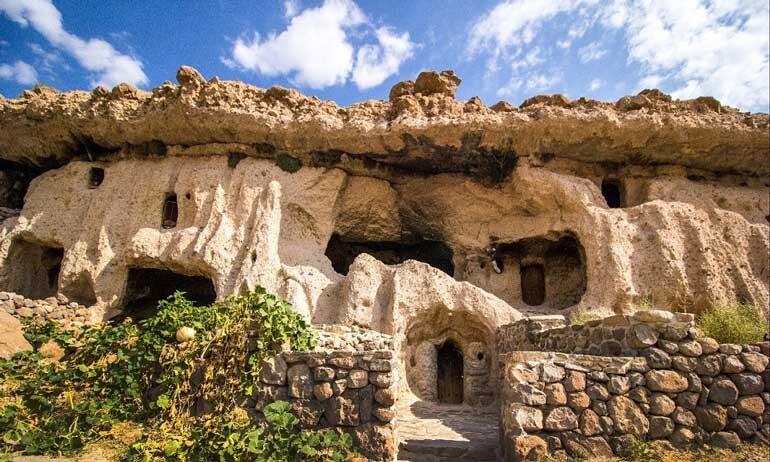Maymand to enjoy tourism boom if it wins UN Tourism label

TEHRAN – Kerman province’s tourism chief has expressed optimism about the potential tourism boom for Maymand Village, a UNESCO-registered site if it secures a prestigious label from the UN Tourism as an exceptional rural tourism destination.
Saeid Shahrokhi on Monday said Maymand as one of the world's best rural tourism destinations would lead to an expansion and better development of tourism in the region.
He made the remarks in a meeting with a meeting of UN evaluators assessing the village's candidacy for the title of the world's best rural tourism village. The official emphasized the importance of Maymand's registration in enhancing and further developing tourism in the area.
He added that the provincial cultural heritage administration is committed to teamwork and completing infrastructural projects to address deficiencies in pursuit of Maymand's global registration.
Shahrokhi highlighted the village's assets in tourism, livestock farming, agriculture, and various aspects of rural and nomadic life, underscoring Maymand's significance.
He further explained that the ongoing livestock production and breeding activities in Maymand are integral to the livelihoods of its residents, contributing significantly to the village's appeal.
Regarding the village's botanical richness, Shahrokhi pointed out that Maymand's treasure trove of medicinal herbs and edible plants greatly enhances its appeal as a tourism destination.
Furthermore, he emphasized that Maymand's unique architecture, recognized as one of the criteria for its global registration, has made it a standout candidate.
The cultural landscape of Maymand was named a UNESCO World Heritage in 2015 as an exemplary system of manmade cave dwellings that is believed to be practiced in the region to cope with its harsh climate.
Sandwiched between a desert and a mountain, Maymand has cold winters and exceedingly hot summers yet abundant with mulberry and blackberry trees. Living conditions in the village are considered severe due to the aridity of the land, high temperatures in the summer, and very cold winters.
Maymand, believed to be one of the earliest human settlements in the region, boasts a history dating back approximately 10,000 years. Many of its natural and manmade caves continue to serve as homes and shelters to this day.
The village's dwellings, carved into the mountainside, resemble caverns, with internal spaces featuring corridors and pillars reflecting rural architectural styles. These houses, stacked four or five stories high, create a unique skyline against the rocky landscape.
Legend has it that the village's early inhabitants utilized a local, pointed stone instead of conventional tools like hammers and chisels to carve intricate designs into the rock faces—a tradition that persists in the region. Some of the stone engravings found in the village date back millennia, providing a glimpse into its ancient past.
Today, Maymand is predominantly inhabited by semi-nomadic shepherds who graze their livestock on the mountain pastures, migrating between temporary settlements during the spring and autumn seasons.
The community's deep connection with the natural surroundings is evident in their social customs, cultural rituals, and religious practices.
Maymand's local dialect preserves elements of ancient Sassanid and Pahlavi languages, largely unchanged over the centuries due to the village's remote location.
The area supports diverse wildlife, including snakes, lizards, hedgehogs, deer, leopards, wolves, foxes, and various birds of prey. Despite the arid climate, the presence of seasonal springs sustains agriculture in the region, with residents meticulously conserving water resources to sustain their livelihoods, a tradition passed down through generations.
AM
